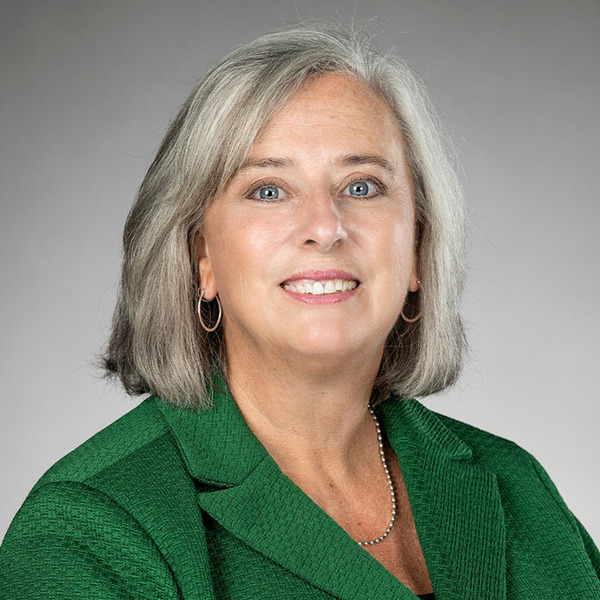Media Mentions
-

The Independent
Study finds toxic ‘forever chemicals’ may be ‘intentionally added’ to some period products
August 11, 2023
Researchers, including Graham Peaslee from the University of Notre Dame in the US, said while these products are designed to make people feel comfortable during a menstrual bleed, their labels do not usually list the ingredients.
Originally published at news.nd.edu.
-

Newsweek
Toxic 'Forever' Chemicals Found in Period Products
August 11, 2023
"[PFAs] have demonstrated environmental persistence, can bioaccumulate, and are known to have human and environmental toxicity," research lead Graham Peaslee, a professor at the University of Notre Dame, told Newsweek.
Originally published at news.nd.edu.
-

The New York Times
We Had 44 Period and Incontinence Products Tested for Forever Chemicals. Many Were Contaminated.
August 11, 2023
In early 2023, we bought and mailed 44 different products to Graham Peaslee, whose University of Notre Dame lab studies PFAS in the environment and has performed tens of thousands of tests looking for signs of contamination with these substances in consumer products.
Originally published at news.nd.edu.
-

The Washington Post
‘Forever chemicals’ found in period underwear, tampon wrappers
August 11, 2023
Researchers from the University of Notre Dame studied more than 120 different menstruation products — menstrual cups, pads, underwear and tampons — sold in the United States.
Originally published at news.nd.edu.
-

Popular Science
This waddling robot could guide baby turtles to the sea
August 09, 2023
To both better understand their movements, as well as potentially help them out, a team of researchers at the University of Notre Dame recently designed and built their own turtle robot.
Originally published at news.nd.edu.
-
$2,000 can help prevent South Bay families from being homeless, data shows
August 02, 2023
“It’s not just delaying homelessness,” said David Phillips, a professor at Notre Dame. “It’s really actually preventing homelessness.” Phillips was one of two professors who authored the study, both with the university’s Wilson Sheehan Lab for Economic Opportunities.
Originally published at news.nd.edu.
-
Do homelessness prevention programs work? Santa Clara County-based study says yes
August 02, 2023
“Our study shows that financial assistance almost totally reduces the chance of somebody having the really severe outcome of becoming homeless,” researcher David Phillips said. The study, conducted by the University of Notre Dame’s Wilson Sheehan Lab for Economic Opportunities, was published earlier this month.
Originally published at news.nd.edu.
-

phys.org
Social media marketing shown to be most effective when it prompts consumers to start posting
August 01, 2023
"The Ripple Effect of Firm-Generated Content on New Movie Releases," published in the Journal of Marketing Research from lead author Shijie Lu, the Howard J. and Geraldine F. Korth Associate Professor of Marketing at Notre Dame's Mendoza College of Business, analyzes 145,502 firm-generated and 5.9 million user-generated Twitter posts associated with 159 movies.
Originally published at news.nd.edu.
-
A first-ever study in Santa Clara County finds financial aid effectively averts homelessness
July 25, 2023
“There really was not a rigorous response to that concern,” said James Sullivan, University of Notre Dame professor of economics and co-founder of the Wilson Sheehan Lab for Economic Opportunities, which aims to help the most vulnerable with its work. Lead author David Phillips said prevention is not a panacea for issues like health and substance abuse, which are often associated with “the most visible forms homelessness.”
Originally published at news.nd.edu.
-

NPR
Study: No matter the economic upbringing, Black families likely to experience similar economic outcome
July 24, 2023
On Monday’s edition of “Closer Look,” Steven Alvarado, an assistant professor of Sociology at the University of Notre Dame, talked with show host Rose Scott about the report and research and why change must start with the labor market.
Originally published at news.nd.edu.
-
First Study Of Its Kind Shows Financial Aid Can Prevent Homelessness
July 22, 2023
"There really was not a rigorous response to that concern," said James Sullivan, University of Notre Dame professor of economics and co-founder of the Wilson Sheehan Lab for Economic Opportunities, which aims to help the most vulnerable with its work. "This really addresses that concern head on."
Originally published at news.nd.edu.
-

Los Angeles Times
Would an occasional blackout help solve climate change?
July 21, 2023
The power grid is already prone to blackouts caused by events as small and difficult to avoid as a squirrel chewing on an electric line, said Emily Grubert, a civil engineer and environmental sociologist at the University of Notre Dame.
Originally published at news.nd.edu.
-
Researchers reveal why obesity makes ovarian cancer more deadly
July 20, 2023
In a study published this month in the Journal of Experimental & Clinical Cancer Research, University of Notre Dame researchers in collaboration with NeoGenomics Laboratories have shed new light on one key factor that can make ovarian cancer especially deadly: obesity.
Originally published at news.nd.edu.
Mentions

Chemistry and Biochemistry
-
Professors sample road dust in Gary
July 20, 2023
Graham Peaslee, a professor from Notre Dame University, and Leah Zimmer, a Notre Dame student, prepare to head out to collect dust samples in Gary.
Originally published at news.nd.edu.
-

The New York Times
What Benjamin Franklin Learned While Fighting Counterfeiters
July 17, 2023
The study draws on more than 600 artifacts held by the University of Notre Dame, said Khachatur Manukyan, a physicist at that institution and an author of the new paper.
Originally published at news.nd.edu.
-

Associated Press
How Benjamin Franklin laid groundwork for the US dollar by foiling early counterfeiters
July 17, 2023
A team at the University of Notre Dame has shed new light on his methods via advanced scanning techniques that reveal some of Franklin’s methods in greater detail — along the way, also providing one more reason Franklin appears on the $100 bill.
Originally published at news.nd.edu.
-

The Wall Street Journal
How Benjamin Franklin Helped Foil Early American Money Counterfeiters
July 17, 2023
Khachatur Manukyan, research associate professor of physics and astronomy at the University of Notre Dame, led a team that analyzed nearly 600 paper money notes printed in America from 1709 to 1790.
Originally published at news.nd.edu.
-
Benjamin Franklin put early anti-counterfeit measures in paper money
July 17, 2023
Khachatur Manukyan at the University of Notre Dame in Indiana and his colleagues analysed the structure and chemical composition of more than 600 bills printed by Franklin and associates between 1709 and 1790.
Originally published at news.nd.edu.
-

Newsweek
Benjamin Franklin Developed a Money Invention We Didn't Know About
July 17, 2023
A team of experts from the University of Notre Dame in Indiana detected the secret techniques after analyzing hundreds of paper bills printed more than 200 years ago.
Originally published at news.nd.edu.
-

CBS News
Environmental group tests to find the best water filters for removing PFAS
July 13, 2023
"We've since discovered that all these PFAS are immune suppressants, so they suppress your immune system and that means any opportunistic disease, including some types of cancer, could take over," said Graham Peaslee, who is a biochemist.
Originally published at news.nd.edu.